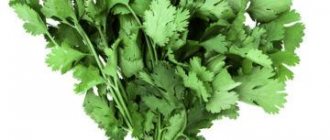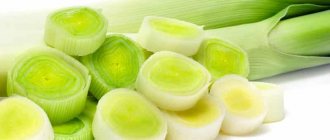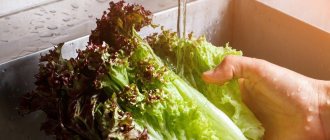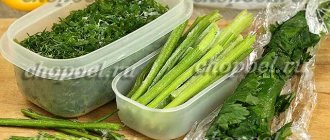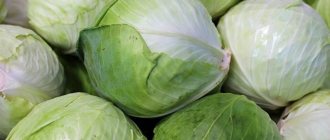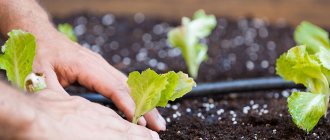Green leafy salads are rich in vitamins and folic acid; doctors recommend including them in the diet in winter to support immunity.
Since the shelf life of lettuce leaves is short, the product is prepared for future use. Some methods will significantly extend the freshness of vegetables and they do not lose nutrients.
There are three ways to preserve lettuce for the winter. Let's talk about all of them in order.
❄ Freezing lettuce leaves
Most leaves can be stored in the freezer. To preserve the quality and appearance of the product when frozen, there are rules.
The preparation process is simple and includes several mandatory steps:
- At the first stage, you should thoroughly rinse all leaves from dirt and clean them.
- The second stage is blanching. To do this, you will need to pour boiling water over the vegetables or immerse them in boiling water for 1 minute. After this, they are transferred to a container of ice water to stop the cooking.
- The next step is drying. Leaves must be completely dry before freezing. It is recommended to place them on paper towels or a clean napkin and wait until completely dry.
- After this, the vegetables are placed in sealed bags or plastic containers and sent to the freezer.
You need to defrost the number of leaves that you need for cooking. Their delicate texture is not suitable for re-freezing.
Instead of storing whole leaves, they are pureed, poured into molds and frozen. This method is good for soft vegetables such as spinach, lettuce, basil, etc.
Video advice on how to properly freeze lettuce leaves
Storage rules
To preserve lettuce throughout the winter, it is important to follow the following rules:
- Thawed product cannot be re-frozen.
- The salad is frozen in portions, and the container is marked (signed) for ease of identification.
- Marinades and preserved salad are also stored in a cool place. In warm conditions it quickly deteriorates.
The most important rule for a refrigerated product is not to break the “cold chain” rule.
You can learn more useful tips on how to preserve green leaf lettuce by watching the following video:
Marinating salad
Another common storage method is pickling.
✍ For one serving you will need the following ingredients:
- Lettuce leaves – 2-3 bunches;
- Garlic - to taste;
- Citric acid – 1 tsp;
- Sugar – 1.5-2 tbsp. l.;
- Salt – 1 tbsp. l.;
- Water – 1 l.
See also: Avocado for salad: how to properly peel at home
Preparation steps:
- At the first stage, you will need to wash and sterilize the canning jars and lids. The easiest way is to place them in a cold oven and gradually increase the temperature.
- After the container has cooled, pre-prepared and chopped salad is placed into it in layers.
- It is recommended to place chopped garlic cloves and a mixture of peppers between the vegetables.
- For the marinade, salt, sugar, vinegar or citric acid are diluted in water.
- Pour vegetables over them and place a press on them. Wait until it cools down completely.
- Place in the pantry, away from direct sunlight, or in the refrigerator.
To add additional taste, dill, parsley and spices are added to the jars.
Preparing greens for storage
Before processing lettuce leaves for storage, they must be washed and dried thoroughly:
- The leaves are sorted, removing roots and rotten parts with a plastic knife.
- Place in a spacious container and fill with cool water.
- Rinse thoroughly.
- If necessary, change the water several times (greens usually have a lot of sand and earthen dust).
The second important point in the preparatory work is blanching the leaves (short-term temperature treatment):
- Pour boiling water over the salad in a bowl.
- After a minute, the water is drained.
- The greens are poured with ice-cold clean water.
Blanching preserves the healthy vitamin and mineral complex in the salad, as well as its elegant bright green color.
READ ALSO: Exquisite jam from rose petals at home: recipes and secrets of perfect preparation
Then the greens are placed in a colander or large sieve. When the water stops draining, the leaves are laid out on clean kitchen towels (cloth, paper). For good drying, the greens are not placed in a bunch, but each leaf separately.
It is not recommended to cut or chop the salad using metal - an ordinary kitchen knife, blender or meat grinder. Upon contact with metal, an oxidation process occurs, which worsens the taste of the greens.
How to get rid of house bugs? Check out a selection of effective ways to fight.
This article explains where fruit flies come from in an apartment and how to deal with insects.
Drying leaves
A simple method of storing greens is drying. Dehydration is carried out both in special devices and in the open air.
Process:
- To begin with, select a quality product.
- Roots and rough branches are cut off from suitable leaves.
- Rinse the greens thoroughly under running water.
- Drain the liquid and place the leaves on a paper or cloth towel until completely dry.
- The next step is drying. If there is no dehydrator, use the oven or place the vegetables on a flat surface, cover with gauze and leave them in the shade with access to fresh air.
- After drying, it is recommended to store it in airtight glass containers or paper bags.
It is better to take young, tender leaves. They will retain the taste without adding bitterness.
Is it possible to freeze lettuce leaves for the winter in the freezer?
Lettuce leaves contain a lot of water, which is the main difficulty in freezing them. However, if everything is done correctly, you can preserve their original appearance as much as possible. Frozen salad has several advantages, the main ones being:
- preservation of vitamins and microelements;
- the taste remains fresh;
- The harvesting process is quite simple.
Types of lettuce leaves and their characteristics
| Name | Characteristics | Taste |
| lettuce | Has many varieties. A characteristic feature is the curly edge of the leaf. The more common subspecies are lolo biondo (with green leaves) and lolo rosso (from burgundy to dark purple shades). | Valuable for its high potassium content. It has a light taste with an unobtrusive bitterness. Nutty notes predominate. Pairs with steaks and vegetable salads. |
| Korn | It is distinguished by many small leaves of a rich green color. | It has a delicate aroma and a pronounced nutty aftertaste. Pairs with citruses, bacon, and onions. |
| Iceberg | Outwardly, it resembles a head of white cabbage, pale green in color. Has high crispness. | The taste is dominated by bitterness. Pairs with fish, seafood, eggs, meat, boiled pork, etc. |
| Romain | The leaves are green in color. Widely popular for its juiciness and crunchiness. | It has a sweetish-tart taste with nutty notes and a delicate aroma. Pairs with light fermented milk dressings. Suitable for burgers, irreplaceable in the popular Caesar salad. |
| Arugula | The stems of the plant are thin, the leaves have a carved shape with a characteristic gray-green color. | It has a pronounced spicy aroma with a hint of spice. The taste is rich, dominated by nutty and mustard notes. Ideal with Parmesan cheese, seafood, cherry tomatoes. |
Fresh and tender leaves will complement any appetizer or replace a side dish for fried steak or baked meat.
Freezing in crushed form
This freezing method uses ice cube trays. The salad prepared in the manner described above is chopped and, if desired, mixed with other chopped herbs (parsley, dill, basil, cilantro, etc.). Place in molds, freeze for 2 hours, then remove, pack in plastic bags and return to the freezer.
The resulting cubes are easy to use because they are divided into portions. They can be stored until the next harvest.
Rules for collecting lettuce
When harvesting, remember the following rules:
- It is recommended to pick the lettuce by the roots, placing it vertically in a container;
- Collection is carried out after the morning dew has dried;
- Only fresh, undamaged leaves are suitable for storage. An overripe vegetable will taste bitter;
- After collection, the greens are separated from the roots, each specimen is thoroughly washed and dried.
Greens must be processed on the day of collection, since subsequent storage significantly affects both the appearance and beneficial qualities of the product.
Preparatory stage and storage in the refrigerator
In order for harvested vegetables to please you with their appearance and taste, it is necessary to use a high-quality starting product.
If you grow a salad crop in your own garden, harvest in the morning in dry weather, because excess moisture will lead to rapid spoilage of the greens. The plant is dug up along with the rhizome and placed vertically in pre-prepared ventilated boxes.
Due to its delicate structure, lettuce does not tolerate transportation well, and if storage rules are not followed, it can lose its original appearance in just a few hours.
Remove lettuce from the garden in dry weather
When buying greens at the market or in a store, give preference to a plant with roots, preferably with the remains of soil on them . The leaves should be juicy and elastic, without the slightest damage or signs of spoilage, but not overripe. Before buying, taste the salad: an overgrown vegetable almost always tastes bitter and the preparation from it turns out to be tasteless.
Give preference to medium-sized leaves, even if large rosettes of lettuce seem more attractive.
If immediately after harvesting or purchasing you do not have the opportunity to store the salad for long-term storage, it can be stored in the refrigerator . To do this you need to know the following tricks:
- to keep lettuce leaves fresh for about 2 days , you need to put them in the vegetable compartment, after wrapping them in a damp towel;
- greens will remain on the vegetable shelf of the refrigerator for 1 week if you wrap it in a paper napkin and put a silver object (for example, a spoon) inside the package;
- If you need to preserve the salad for up to 14 days , keep it in the refrigerator in glass or plastic airtight containers. Place a paper napkin on the bottom of the container, lay out a layer of greens, cover with paper on top and tightly close the contents with a lid.
In the refrigerator, the salad can stay fresh for up to 2 weeks.
Benefits of lettuce leaves
- Greens are rich in vitamins B, E, PP, minerals, ascorbic acid. It contains magnesium, potassium, iron.
- Leafy vegetables are low in calories.
- Normalize blood cholesterol levels.
Thanks to their rich composition, their use has gone beyond cooking. The product is gaining great popularity in cosmetology - masks, tonics, and lotions are made based on extracts.
The main thing is to wash the salad thoroughly before eating. It is best to do this in a solution of salt and soda to avoid intestinal infections.
See also: How much and how to cook beef liver for salad [+recipe]
What are the benefits of leaf lettuce for humans?
Vitamins of groups A, B, C, E, K, PP - needed by bones, hair, nails and skin. Vitamin E is indispensable for the female reproductive organs and helps maintain the functionality of the female reproductive system longer.
Microelements - manganese, potassium, boron, iron, copper, phosphorus - make hair, nails and teeth healthier and more beautiful. Manganese, by the way, helps vitamins be better absorbed, and magnesium will strengthen our heart and blood vessels.
For those with high cholesterol, lettuce leaves are vital; they help blood flow through the vessels faster and easier. Reduces the risk of blood clots and reduces the risk of varicose veins. Reduces blood sugar levels, so people with diabetes need to eat leafy lettuce often and preferably all year round.
For weight loss - you can eat salad greens of all varieties and types as much as you like. It reduces appetite, speeds up metabolism and turns on the process of decoupling lipids in the body. All this helps to quickly get rid of extra pounds on the sides and waist.
Nervous system – a mild sedative effect, calms the excited nervous system, which makes it useful for sleep disorders and frequent attacks of melancholy, which often precedes depressive states.
Who shouldn't eat lettuce?
- For those who have problems with the kidneys and genitourinary system.
- During exacerbations of gastrointestinal diseases.
- Caution for those diagnosed with bronchial asthma. But if there are no manifestations of it in the form of allergies or shortness of breath, eat plenty, the stronger the heart and blood vessels, the easier it is for the body to cope with attacks.
- For those who suffer from frequent bowel movements, lettuce leaves can be a source of additional discomfort due to their mild laxative effect.
Interesting Facts
As already written above, lettuce leaves are a delicate and whimsical plant that requires careful and careful treatment. Knowing some facts about greens, you can protect yourself from their rapid spoilage:
- Lettuce leaves are stored completely dry: even a small drop of water accidentally remaining after drying can spoil the taste of the plant.
- You should not chop the leaves with a knife, as contact with metal negatively affects their taste. It is customary to tear salad leaves by hand.
- Processed lettuce should be eaten immediately or used for preparations for the winter - it quickly loses its presentation and benefits.
